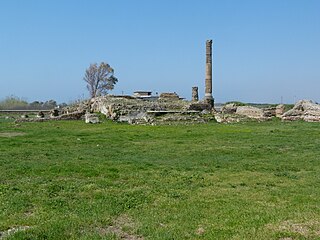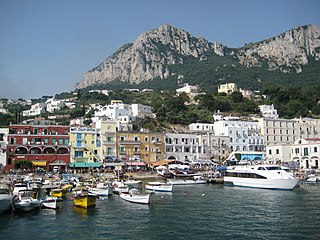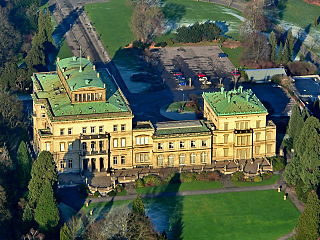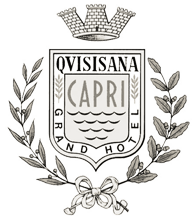
The Krupp family, a prominent 400-year-old German dynasty from Essen, is famous for their production of steel, artillery, ammunition and other armaments. The family business, known as Friedrich Krupp AG, was the largest company in Europe at the beginning of the 20th century, and was the premier weapons manufacturer for Germany in both world wars. Starting from the Thirty Years' War until the end of the Second World War, it produced battleships, U-boats, tanks, howitzers, guns, utilities, and hundreds of other commodities.

Opatija is a town and a municipality in Primorje-Gorski Kotar County in western Croatia. The traditional seaside resort on the Kvarner Gulf is known for its Mediterranean climate and its historic buildings reminiscent of the Austrian Riviera.

Capri is an island located in the Tyrrhenian Sea off the Sorrento Peninsula, on the south side of the Gulf of Naples in the Campania region of Italy. The main town Capri that is located on the island shares the name. It has been a resort since the time of the Roman Republic.

The Villa San Michele was built about the end of the 19th century on the isle of Capri, Italy, by the Swedish physician and author Axel Munthe.

Liternum was an ancient town of Campania, southern central Italy, near "Patria lake", on the low sandy coast between Cumae and the mouth of the Volturnus. It was probably once dependent on Cumae. In 194 BC it became a Roman colony. Although Livy records that the town was unsuccessful, excavation reveals a Roman town existed there until the 4th century AD.

Alfred Krupp was a German steel manufacturer and inventor; the largest arms supplier of his era, which earned him the nickname "The Cannon King".

Friedrich Alfred Krupp was a German steel manufacturer and head of the company Krupp. He was the son of Alfred Krupp and inherited the family business when his father died in 1887. Whereas his father had largely supplied iron and steel, Friedrich shifted his company's production back to arms manufacturing. Friedrich greatly expanded Krupp and acquired the Germaniawerft in 1896 which gave him control of warship manufacturing in Germany. He oversaw the development of nickel steel, U-boats, the diesel engine, and much more. He died, possibly by suicide, in 1902 after being accused of homosexuality. His daughter Bertha inherited the company.

Christian Wilhelm Allers was a German painter and printmaker.
Friedrich Krupp Germaniawerft was a German shipbuilding company, located in the harbour at Kiel, and one of the largest and most important builders of U-boats for the Kaiserliche Marine in World War I and the Kriegsmarine in World War II. The original company was founded in 1867 but went bankrupt and was bought out by Friedrich Krupp. Krupp was very interested in building warships and in the time before the First World War built a number of battleships for the Kaiserliche Marine, including SMS Posen, SMS Prinzregent Luitpold, SMS Kronprinz, and SMS Sachsen. A total of 84 U-boats were built in the shipyard during the war. After the war it returned to the normal production of yachts and transports.
The island of Capri is situated in the Gulf of Naples, between the Italian Peninsula and the islands of Procida and Ischia. Made of limestone, its lowest part is at the center, while its sides are high and mostly surrounded by steep precipices, which contain numerous caves. Its topography is dominated by the slopes of the Monte Solaro in the West and Monte San Michele the East.

Capri is a municipality, in the Metropolitan City of Naples, situated on the island of Capri in Italy. It comprises the centre and East of the island, while the West belongs to Anacapri.

The Villa Hügel is a 19th-century mansion in Bredeney, now part of Essen, Germany. It was built by the industrialist Alfred Krupp in 1870-1873 as his main residence and was the home of the Krupp family until after World War II. More recently, the Villa Hügel has housed the offices of the Kulturstiftung Ruhr, an art gallery, the historical archive of the Krupp family and company, and a concert venue.

Marina Grande is the main port of the island of Capri in Italy, to the north of the main town of Capri and at the foot of Mount Solaro.

Marina Piccola is located on the southern side of the island of Capri. It is near the Faraglioni sea stacks to the southeast. The Via Krupp is a historic switchback paved footpath which connect the Charterhouse of San Giacomo and the Gardens of Augustus area with Marina Piccola. The Marina Piccola, used by Augustus and Tiberius, preceded the Marina Grande.
Palazzo a Mare is a well-preserved ancient Roman archaeological site on the north side of the island of Capri, consisting of an imperial palace built by Augustus and modified by Tiberius. It was one of the supposed twelve villas of Tiberius on the island as described by Tacitus along with the Villa Jovis, Villa di Gradola and Villa Damecuta. It covers a very large area on several terraces overlooking the sea.

The Gardens of Augustus, originally known by the name of Krupp Gardens, are botanical gardens on the island of Capri, Campania, Italy.

Piazza Umberto I is the most famous square of the island of Capri, Italy. The square is located in the historic center of Capri, in the eponymous town Capri, on the eastern end of the island, and since Roman times, it has been considered the center of the town and the meeting point of the island by both residents and others.

The Grand Hotel Quisisana is the largest and one of the best known hotels on the island of Capri. It is located in the heart of the old town of Capri, opposite the Hotel Residenza Capri and the Villa Sanfelice, to the south of the Piazza Umberto I. Set in gardens with "sprawling buildings [which] are painted a distinctive yellow and accented with vines," it is also a notable dining venue in the historic centre of Capri. British doctor George Sidney Clark established a sanatorium in 1845, turning it into the Grand Hotel Quisisana in 1861. "Qui si sana" means "here one heals" in Italian.

Villa Certosella is a hotel in Capri, Italy. Set along the Via Tragara, it was the home of Camille du Locle when he lived in Capri. The villa was enlarged by the illustrator Jan Styka in Italian Renaissance style. Later, Edwin Cerio requisitioned the house so that it is now part of the Ignazio Cerio estate. Cerio removed the Renaissance elements, returning the house to the casa mediterranea style. The master builder, Luigi Desiderio, worked on the property.
Chiesa di Sant'Andrea is a church in the island of Capri, Italy, near the Marina Piccola in the south. It was built in 1900 for the local fishermen. The site which the church lies on formerly contained a watch tower which was used as a lookout post for invading Saracen pirates. The church was designed by the painter Riccardo Fainardi, and funded by German banker Hugo Andreae and his wife, Emma.

















